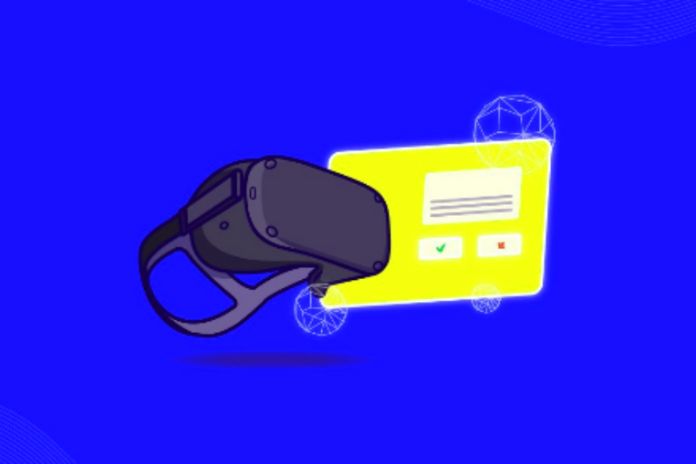Virtual reality (VR) in Engineering is increasingly becoming an essential tool for optimizing processes. However, some professionals are still not aware of the positive impacts it can have on their professional journey. For this reason, in this content, they will be addressed.
For this innovation part of the arrival of digital transformation in companies to be used efficiently, it is helpful to keep a few factors in mind:
- You need to understand what it is about.
- Understand its effects in practice.
- It is essential to improve some factors to make the most of it.
Keep reading if you want to check out this information and delve deeper into the topic!
What Is Virtual Reality?
Able to play with the senses, this technology created in the mid-1970s gained space in several areas. It is possible to create environments that simulate the actual location even if it is not there. In other words, this visual modernization allows the user to immerse himself in a place simulated by a computer system.
When we talk about virtual reality in Engineering, we refer to applying its techniques to achieve the long-awaited optimization of projects. This intention is generally realized. After all, having access to the scenarios that will be built even before the work, its planning and execution improve in terms of fluidity. To understand how VR affects the area, it is necessary to go into the specific functions it performs in the day-to-day of engineers and related professionals.
What Are The Impacts Of Virtual Reality On Engineering?
The advantages this modernization promotes are directly affected by the contracted companies and their customers. While companies guarantee an efficient and complete operation, customers can visualize the service before it starts. In this way, the closing of negotiations takes on a new guise and becomes interesting for both sides. Other effects of VR in the area will be mentioned below.
Possibility Of Virtual Tour
One main factor in closing a contract is the expectation regarding what will be built. Whether it’s a factory, a monument, etc., the preview of the space will alleviate anxiety and allow the client and those involved in the project to “visit” the place. Even if they’re not there, the quality of the VR is quite faithful to reality.
Project Design
Innovation directly impacts the aesthetics involved in the processes. After all, if some detail is out of the proposed one during the visualization, it is possible to change it and ensure alignment. Depending on the case, this can be done until the final result is as expected.
Visualization Of The Environment
During the process, the client and the specialists can check the project. You can do this to remember details, minimize the contractor’s anxiety, or direct some tasks. With easy access to the virtual environment, managers and leaders can delegate functions that make getting to the result more agile and reliable.
Interaction With Projects
In addition to acting in favor of a first visualization of the space, virtual reality in Engineering allows the client to interact with the future project. This facility causes enchantment and promotes a competitive differential for the company, which is placed as an authority and precursor of the use of differentiated technologies.
Effective Planning And Execution
As expected, with a timely endorsement by the contractor, executing and planning are tasks that become maximized in efficiency. The result is close to what was agreed in the contract, bottlenecks are minimized, your team training becomes simplified, and management works to maximize its potential. In general, the whole process is optimized.
What Points Need Improvement In The Use Of Virtual Reality In Engineering?
To ensure all the advantages above, some factors need to be improved. The proper use of this type of technology is only possible when done by trained professionals ready to put it into practice. Thus, the measures below should become part of the VR implementation.
Acquisition Of Knowledge
Understanding how the area works, in which situations the use of virtual reality is indicated, the details behind the planning of the project that will be set virtually, and other surrounding factors is fundamental. Some knowledge needed for this include:
- Cost Management and Engineering;
- Construction management;
- Management of Projects and Enterprises;
- Notions of Innovation;
- Contract Management etc.
Without this knowledge, not even the best technologies will guarantee benefits to employees and organizations. For this reason, constant learning is a permanent need to be observed by engineering professionals.
Competitiveness
Another essential point for the positive impact of VR is the companies’ search for competitiveness. Many delay the acceptance of digital transformation in their corporate environments. The reasons range from thinking that employees are not prepared to reduce expenses.
However, in doing so, competing businesses gain ground and threaten these organizations’ security. The desire to be ahead and take action to make this possible is essential for those who want success!
Specialized Professionals
Finally, the right experts must make up the team that will lead the use of VR. Hiring should be guided by how up-to-date the specialists are with the market . This demand makes those who already work invest in certifications that guarantee their knowledge in the area. As far as students are concerned, it is impossible to stop learning!
Also Read: Data Science: 4 Trends For The Near Future












